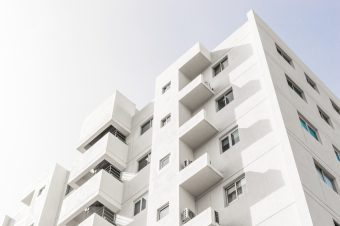
Global warming has prompted researchers around the world to find innovative solutions to make buildings conserve energy as efficiently as possible. One of the solutions is the brightest white paint, which reflects the Sun’s rays more successfully than any other colour. This technique is also used in modes of transport, such as aeroplanes. While the idea is great for the increasingly hot summer days, it is not so great for colder days. One thing is certain – whitewashing the buildings seasonally, i.e. painting them white in summer and black in winter, would certainly not contribute to the fight against climate change.
As nature offers us solutions for almost all the problems we face, this is no exception. Scientists from the University of Chicago found inspiration for their invention in a very interesting animal – the chameleon.
They invented a material that changes its infrared colour depending on the air temperature, which regulates the heat it absorbs or emits back into the atmosphere. Namely, during hot days, this material can emit up to 92 per cent of the infrared heat it contains. On the other hand, in the colder period of the year, it can emit only 7 per cent of this heat, to retain the rest and help the building maintain heat.
Scientists explain how the material works. The layer has two conformations. The first is solid copper and the second would be best understood if it were described as an aqueous solution. With the use of a very small amount of electricity, these two conformations interchange from one to the other. In the case of solid copper, heat is retained, while this aqueous solution emits heat back into the atmosphere.
The scientists presented the effectiveness of their solution through a concrete example of an ordinary building in America. It takes less than 0.2 per cent of the building’s total electricity consumption would be needed to change between the two conformations. It is important to note that when such a change occurs, no electricity is needed to maintain the current state for a further period. The advantage that this material brings is a possible saving of over 8 per cent of annual energy consumption for the building’s so-called HVAC system, that is, heating, ventilation and air conditioning.
In terms of the colour of the building front, scientists say that almost any colour could be used, because in the aqueous state – which is transparent – any colour behind it can be applied without interference.
Although more time is needed for the idea to be fully developed and to ensure its wide application, the University researchers are very hopeful. Until its application takes root in our region, using all the possibilities available to us to make our homes or offices more energy efficient will be a step forward towards a safer future.
Katarina Vuinac

